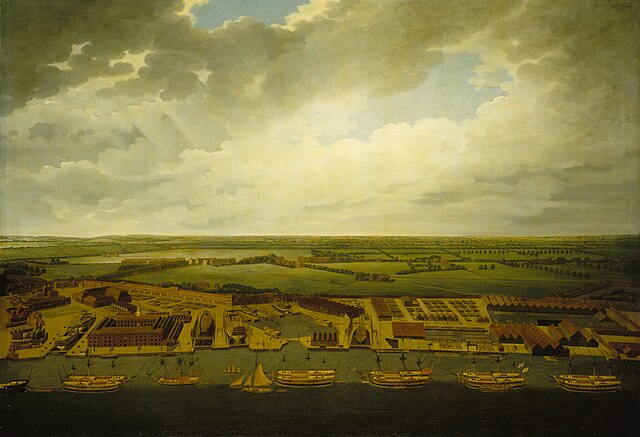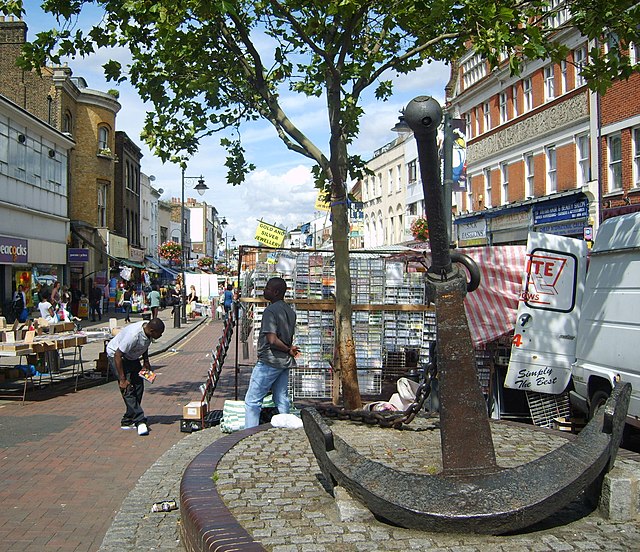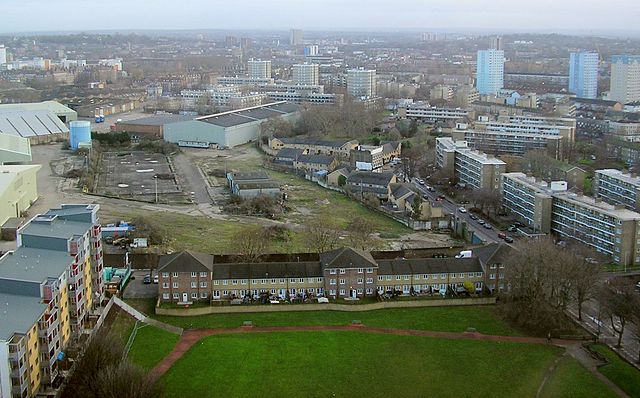Convoys Wharf in Deptford is a former commercial wharf on the River Thames in London, currently awaiting redevelopment. It includes the site of Deptford Dockyard, built in the reign of King Henry VIII as one of the first Royal Dockyards. Convoys Wharf also covers most of the site of Sayes Court manor house and gardens, one-time home of the diarist John Evelyn.
Convoys Wharf as seen from the Thames Path in 2009.
Landscape view of Deptford Dockyard; Oil on canvas by Joseph Farington (late 18th century to early 19th century); from Collections of the National Maritime Museum.
Protest graffiti on the Grove Street gateway
Convoys Wharf
Deptford is an area on the south bank of the River Thames in southeast London, in the Royal Borough of Greenwich and London Borough of Lewisham. It is named after a ford of the River Ravensbourne. From the mid 16th century to the late 19th it was home to Deptford Dockyard, the first of the Royal Dockyards. This was a major shipbuilding dock and attracted Peter the Great to come and study shipbuilding. Deptford and the docks are associated with the knighting of Sir Francis Drake by Queen Elizabeth I aboard the Golden Hind, the legend of Sir Walter Raleigh laying down his cape for Elizabeth, Captain James Cook's third voyage aboard HMS Resolution, and the mysterious apparent murder of Christopher Marlowe in a house along Deptford Strand.
An anchor at the southern end of Deptford High Street links Deptford to its dockyard history
Surviving riverside building of the former Royal Victoria Victualling Yard
Former Deptford Town Hall, now part of Goldsmiths College
View of Pepys Park, Convoys Wharf, Sayes Court, and over Deptford towards Lewisham








